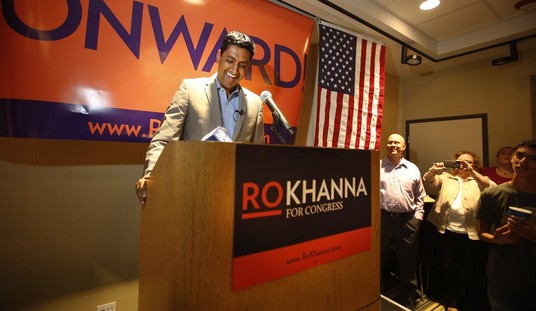One of the tastiest morsels in today’s banquet of intel details.
Officials say CIA interrogators in secret overseas prisons developed the first strands of information that ultimately led to the killing of Osama bin Laden.
Current and former U.S. officials say that Khalid Sheikh Mohammed, the mastermind of the Sept. 11, 2001 terrorist attacks, provided the nom de guerre of one of bin Laden’s most trusted aides. The CIA got similar information from Mohammed’s successor, Abu Faraj al-Libi. Both were subjected to harsh interrogation tactics inside CIA prisons in Poland and Romania.
One U.S. official, speaking to the LA Times, noted drily, “That took years and these guys don’t give it up all willingly.” So much for the canard that enhanced interrogation never, under any circumstances, yields useful information. I’m trying to get the timeline straight, though. Apparently, sometime between 2002 and 2007, KSM and/or al-Libi revealed the courier’s pseudonym to the CIA while at a secret prison; then, four years ago, the CIA finally figured out the courier’s real name, which was the first big break in tracking him to Bin Laden’s door. The NYT, however, says that the CIA got the courier’s pseudonym from detainees at Gitmo. Maybe they corroborated the info gleaned from KSM and al-Libi at the black sites, or vice versa? Bear in mind too that al-Libi wasn’t one of the three high-value detainees who were waterboarded. He coughed up the courier’s name after some sort of lesser enhanced interrogation, and not until we have a precise timeline on KSM will we know exactly when in the process he gave them the name. Dick Cheney phoned into Fox this afternoon to talk about the role of EIT in this and said, while he assumes that it helped, he’ll have to wait for more details to know for sure. Watch below via Fox News Insider.
Since we’re on the subject of operational details, be sure to read Marc Ambinder’s inside report on how elite special forces units have become increasingly sophisticated — and consequently more lethal — intelligence-gatherers. Petraeus and McChrystal famously perfected rapid military/intel integration in Iraq; the Bin Laden killing last night is a spectacular demonstration of how good we’ve gotten.
The way JSOC solved this problem remains a carefully guarded secret, but people familiar with the unit suggest that McChrystal and Flynn introduced hardened commandos to basic criminal forensic techniques and then used highly advanced and still-classified technology to transform bits of information into actionable intelligence. One way they did this was to create forward-deployed fusion cells, where JSOC units were paired with intelligence analysts from the NSA and the NGA. Such analysis helped the CIA to establish, with a high degree of probability, that Osama bin Laden and his family were hiding in that particular compound.
These technicians could “exploit and analyze” data obtained from the battlefield instantly, using their access to the government’s various biometric, facial-recognition, and voice-print databases. These cells also used highly advanced surveillance technology and computer-based pattern analysis to layer predictive models of insurgent behavior onto real-time observations.
The military has begun to incorporate these techniques across the services.
Another scoop from the same piece: “Several dozen JSOC operatives have died in Pakistan over the past several years.” Apparently, their deaths are typically reported as “training accidents” in eastern Afghanistan. Maybe that’s why Obama felt confident in ordering a daring special ops mission deep inside the country — judging by the death toll of U.S. troops there, daring missions are nothing new. Even so, it took balls to make a call like that given the risks of a Mogadishu/Desert One disaster and the availability of an effective-yet-sloppier bombing run on the compound. Obama reportedly considered the latter before ruling it out, knowing that only boots on the ground could limit civilian casualties and come back with proof that we got our man.. That was the bold move, and the smart one.







Join the conversation as a VIP Member